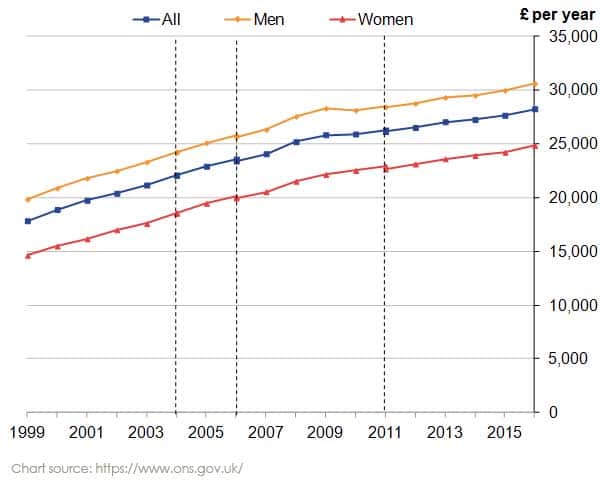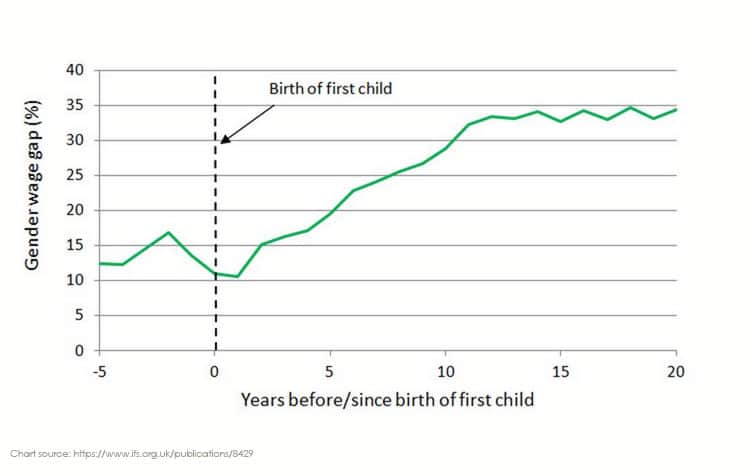Gender Pay Gap in the UK
The issue of the Gender Pay Gap has been a popular topic in recent years. Although the pay gap has reached an all time low, full time female employees are still paid 9.4%(1) less than their male colleagues(2) and the World Economic Forum estimates this gap will not close for another 170 years.(3)
While it has been 16 years since passage of the Equal Pay Act, the disparity between men’s and women’s incomes remains. Analyses suggest the reasons for the continuing pay gap are less about career choices and more about societal constraints and expectations.

Chart from Office for National Statistics.
With the implementation of section 78 of the Equality Act 2010, private businesses with more than 250 employees are now required to disclose the pay gap between their male and female relevant employees on April 5th each year.
Relevant employees are those who hold contracts of employment, apprenticeship contracts, are casual workers, zero hours workers, and contractors.
The information businesses are required to disclose is:
- The difference between the mean hourly rate of pay for male and female employees
- The difference between the median hourly rate of pay for male and female employees
- The difference between the mean bonus pay of male and female employees in the 12 month period prior to the 5th April
- The difference between the median bonus pay of male and female employees in the 12 month period prior to the 5th April
- Proportions of male and female relevant employees who received bonus pay in the 12 month period prior to the 5th April
- Proportions of male and female employees in each of the quartile pay bands(4)
Narrowing the Gender Pay Gap
Reporting is only a beginning. Businesses will have to do more than disclose pay gap figures if they are to help combat this issue.
Studies suggest one of the primary reasons for the continuing pay gap is childcare commitments. A study by The Institute for Fiscal Studies finds that the pay gap increases markedly following the birth of a child.(5)

Chart from Institute for Fiscal Studies showing Gender Pay Gap changes after birth of a child.
Working toward Equal Pay
So what potential options do businesses have to help close this gap?
- Give female employees earning less than their male colleagues a pay rise
- Place equal emphasis on paternity leave for male employees
- Allow parents to work from home
- Subsidise childcare
Additionally, changes to The Equality Act, proposed for 2017, will more strictly regulate how businesses calculate and report this information. DLP will publish a followup to this article outlining the changes.
With much media coverage your employees are aware of this issue. DLP can advise about ways to narrow and ultimately eliminate the gender pay gap and bring parity to the workplace. Contact us today for a free consultation.
(1) 18.1% for all employees (including part-time employees)
(2) Office for National Statistics
(3) World Economic Forum Report
(4) Quartile pay bands are calculated by employers and an equal number of employees should be represented in each quartile.
(5) The Institute for Fiscal Studies
Additional Reading
Annual Leave Crisis
Almost a third or UK workers cancelled annual leave in 2020 leaving employers…
Creepy Callers…
Despite the positive intent for the service, there are many examples of personal…
Contact Info
Registered Office
1 City Road East
Manchester M15 4PN
